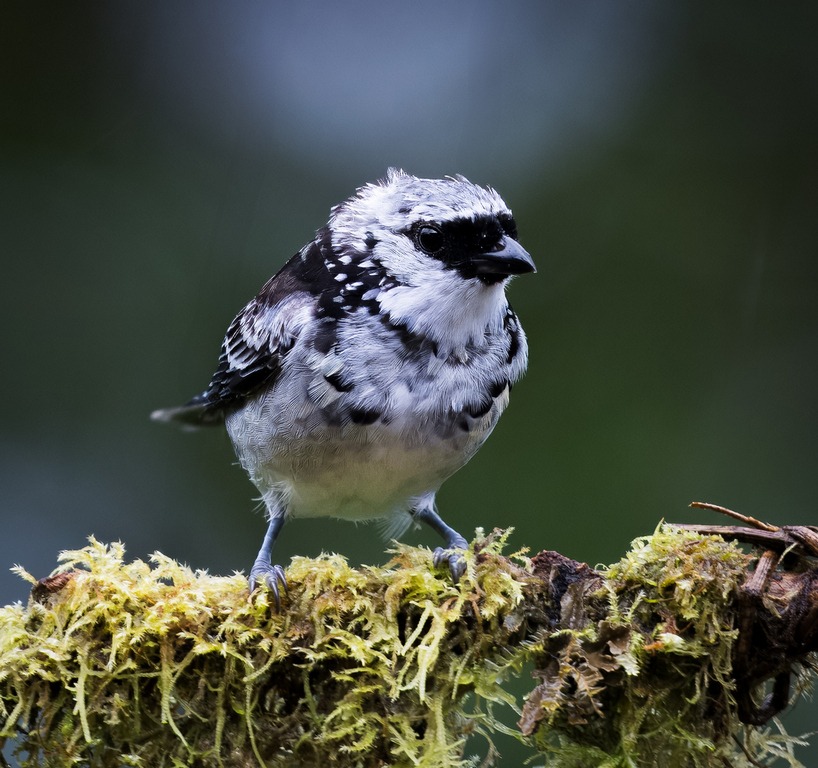
John Potts is the President of Happy Gringo Travel, a tour operator specializing in the Galapagos Islands, Ecuador, & Peru, including dedicated birding tours. He is an avid birder and wildlife photographer (Instagram: @wildlifewithjonny) himself, based in the capital city of Quito.
Let me introduce you to one of the ten most important birding biodiversity hotspots on the planet.
Ecuador’s Andean Chocó region is a UNESCO recognized Biosphere Reserve, supporting 900+ species of birds. The Chocó even surpasses Ecuador’s Amazon in the number of endemic and range-restricted species present.
What is the Chocó’s secret to success? Its area of 286 thousand square kilometers covers an altitudinal range from 360 to 4,480 meters above sea level. Hence, the Chocó boasts a habitat diversity including montane cloud forest, lowland forest, foothill forest, high Paramo grasslands, and many microclimates too. Drive 15 minutes and you’ll already start finding new species.
My love for birding was born at a rustic lodge in the heart of the Andean Chocó. The simple act of 2 non-birders competing over who could tick off most bird species in a day, and I’ve been hooked ever since. In fact, that very same day I bought my first birding book of Ecuadorian species. Little did I know back then that life my life was about to change forever.
Back to the Ecuadorian Chocó, some of the bird families that call this region home include: tanagers, hummingbirds, antpittas, flycatchers, owls, raptors, quetzals and trogons, woodcreepers, woodpeckers, barbets & toucans, manakins, potoos & nightjars.
Here are a few shots of some of the more colorful Choco species:
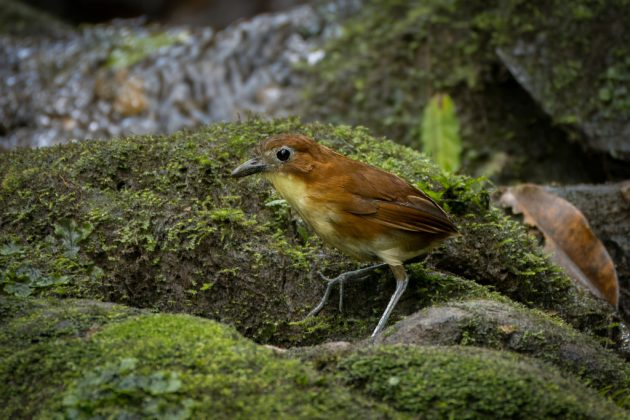
Yellow-breasted Antpitta (Grallaricula flavirostris) – as is typical of antipittas, this species is rather shy and elusive, and more often heard than seen.
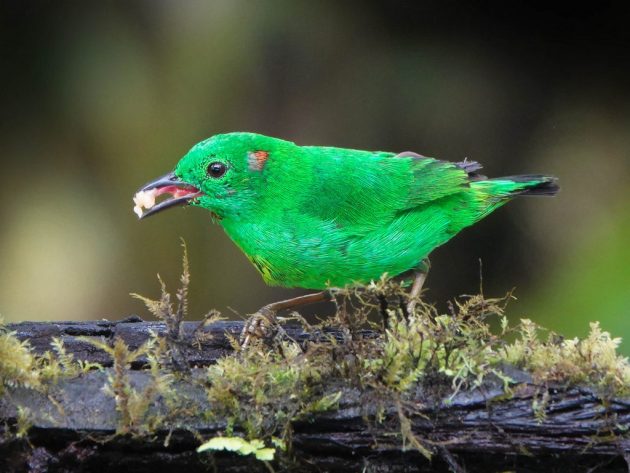
Glistening-green Tanager (Chlorochrysa phoenicotis) – this bright emerald-green beauty calls Ecuador’s Choco cloud forest home. You’ll have go to very specific sites to find him, where he’ll usually be in mixed flocks or at fruit feeders.
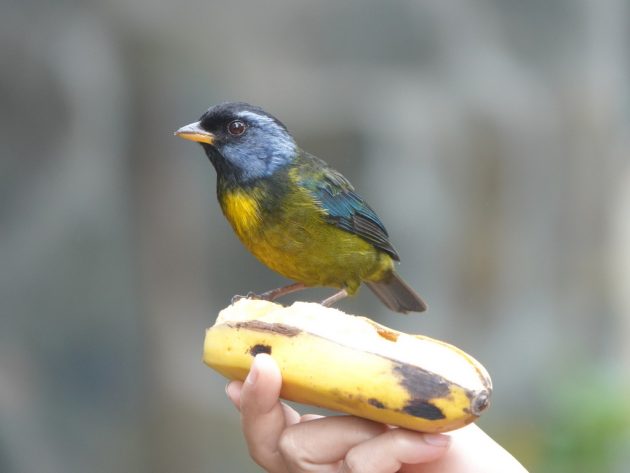
Moss-backed Tanager (Bangsia edwardsi) – beautiful olive, yellow, and blue plumage, this is another classic tanager species found in humid foothills of subtropical Choco forest.
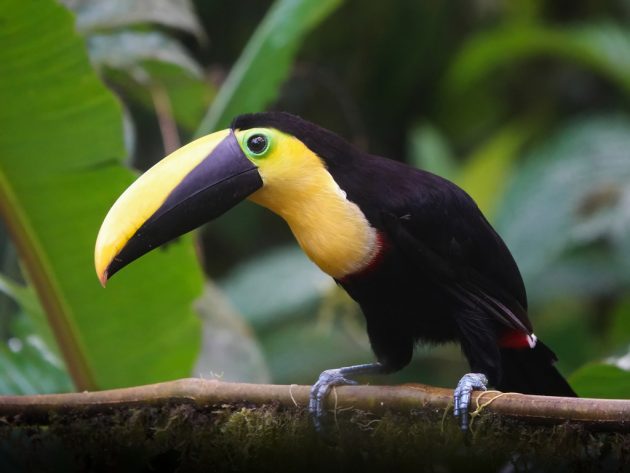
Choco Toucan (Ramphastos brevis) – What a beauty! As suggested by his name, this toucan is restricted to the Choco region, at altitudes under 1700m. This is one of 7 species of toucan, aracari, and toucanet found in Ecuador’s Choco.
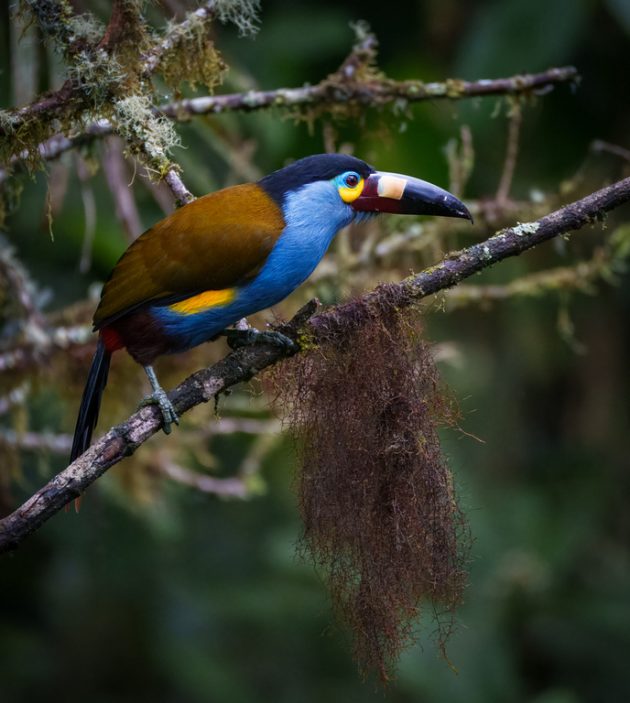
Plate-billed Mountain Toucan (Andigena laminirostris) – Higher up in the cloud forest we find the Choco’s only mountain toucan species, and it’s one not to be missed.
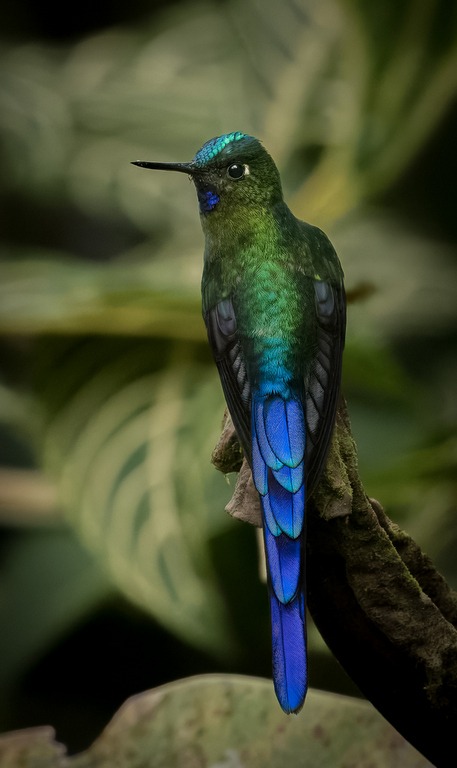
Violet-tailed Sylph (Aglaiocercus coelestis) – the male is unmistakable for his long forked iridescent purple and blue tail, as demonstrated here. This hummingbird is found in the Andean foothills of Ecuador, from 900–2,000 m.
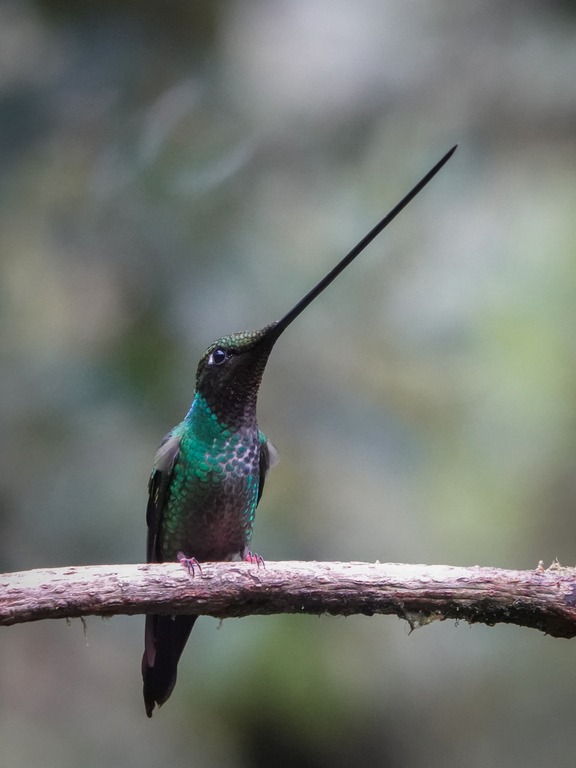
Sword-billed Hummingbird (Ensifera ensifera) – this unbelievable hummer boasts the longest bill in relation to its body size of any bird in the world! Found higher up in montane forest, he uses that long bill to feed from tubular flowers.
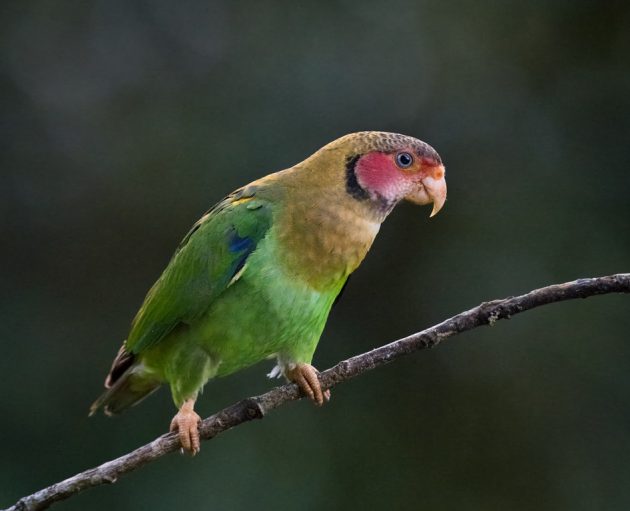
Rose-faced Parrot (Pyrilia pulchra) – this attractive, fruit-eating parrot is mostly found in small flocks to the north of Ecuador’s Choco region. As you can see, he’s certainly very photogenic.
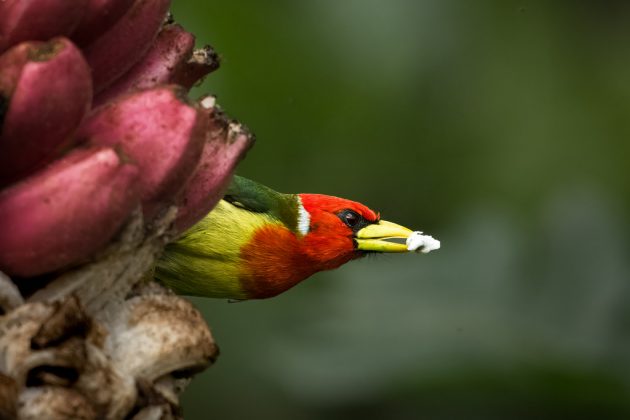
Red-headed Barbet (Eubucco Bourcierii) – was this bird the model for the Angry Birds franchise? A common sight in the Choco and other regions of Ecuador.
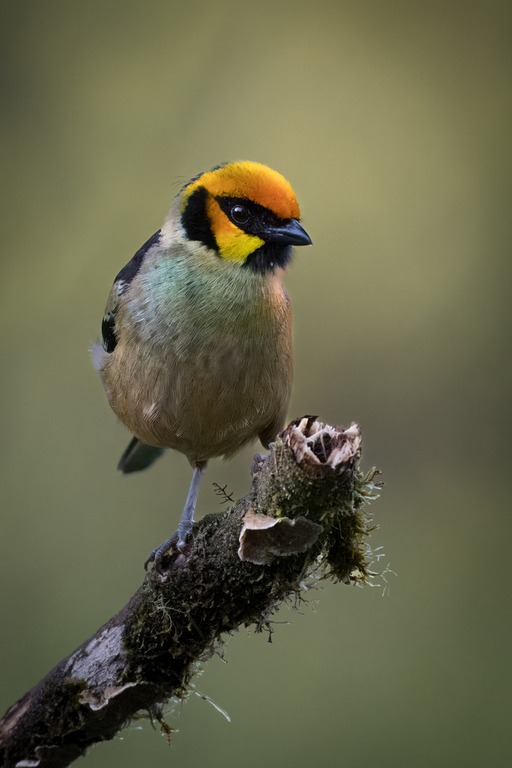
Flame-faced Tanager (Tangara parzudakii) – A more common species, but one of my favorites, the flame-faced tanager is often found at the feeders. This bird was on my very first fateful species tick-list all those years ago.
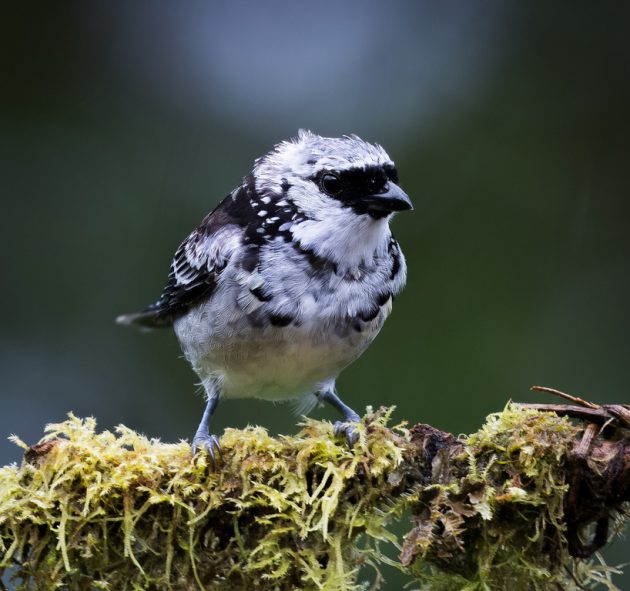
Gold & grey Tanager (Tangara palmeri) – described by e-bird as “chunky”, which seems a bit harsh. Personally, I rather like the mess of black and white with small golden flecks, so they’ll be no fat-shaming from me.
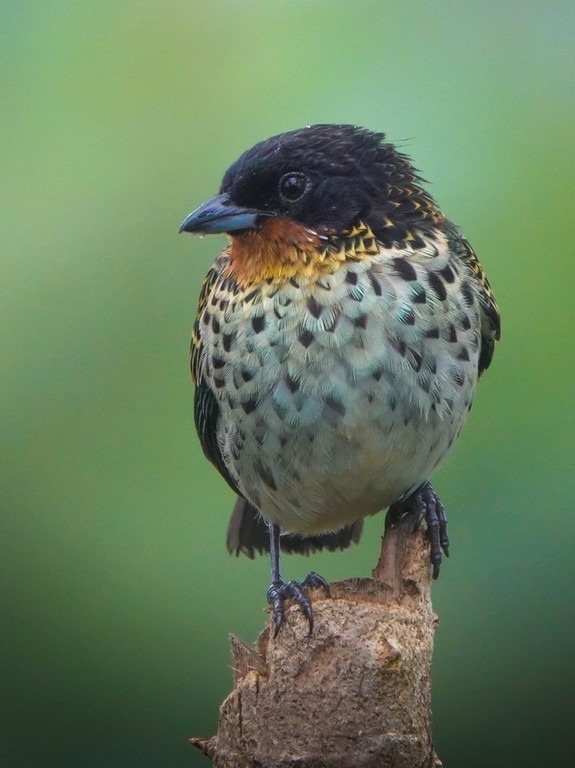
Rufous-throated Tanager (Tangara rufigula) – Another delightful tanager to add to our collection. I find this species to be wonderfully photogenic; just look at that throat!
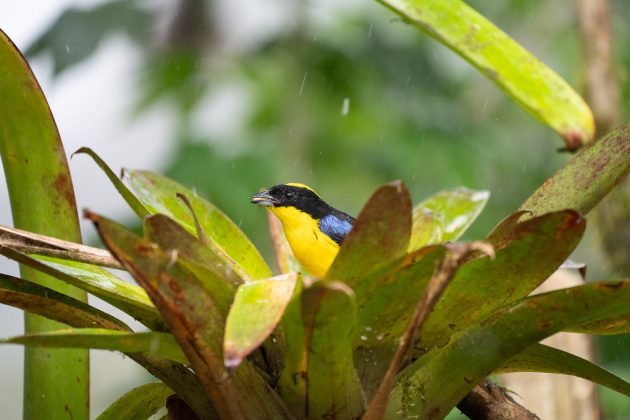
Blue-winged Mountain Tanager (Anisognathus somptuosus) – Another species from my first ever checklist, this common and colorful mountain tanager is spotted at various sites of the Choco.
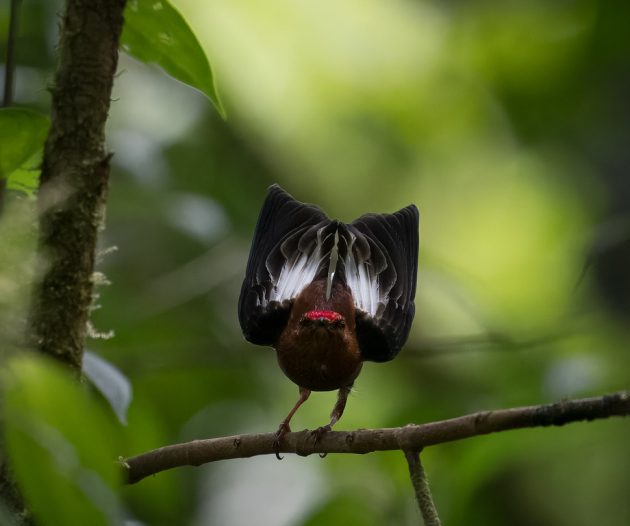
Club-winged Manakin (Machaeropterus deliciosus) – I’ll never forget my first visit to this manakin lek. Males hop, strut, and flick their wings upward, while vibrating their feathers at incredibly high speeds to attract females.
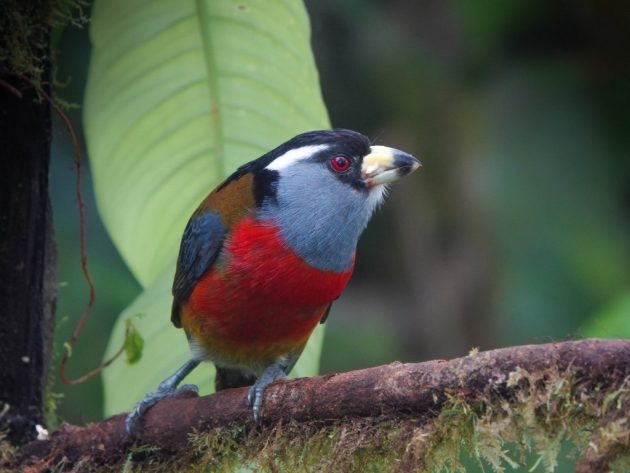
Toucan Barbet (Semnornis ramphastinus) – For me, one of the most spectacular birds of the Choco region.
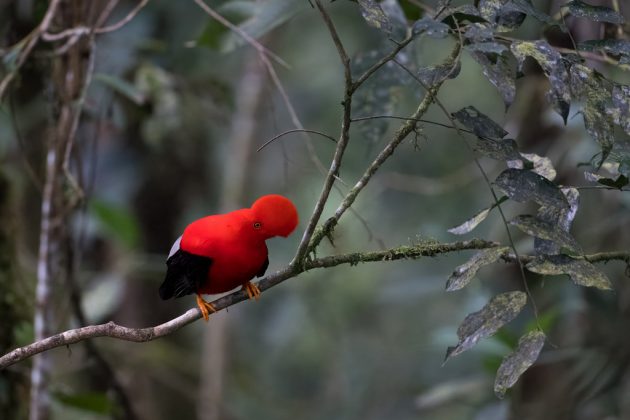
Andean Cock-of-the-rock (Rupicola peruvianus) – This fella is one of the most iconic birds of the Andes, from Bolivia all the way up to Colombia. It’s a classic species of the cloud forest. If you don’t spot those dramatic colors first, you’ll likely hear the scandalous shrieks of competing males at a lek.
How to visit Ecuador’s Andean Chocó?
Located just 1 hour north-west of capital city, Quito, the Andean Chocó is easily accessible. Good road infrastructure links together excellent lodges and private reserves. Most lodges offer a combination of feeder setups and forest trails, so there’s something for all tastes. An experienced English- speaking birding guide is also recommended. It’s easy to spend an entire week in this region alone, but, don’t forget, Ecuador also boasts Amazon Rainforest, the Galapagos Islands, and Southern Tumbesian forest.


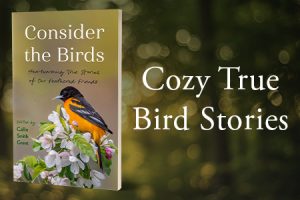




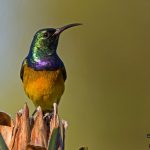


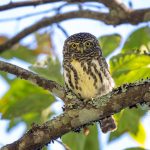
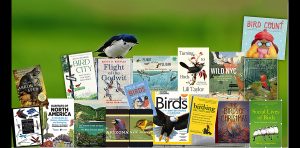
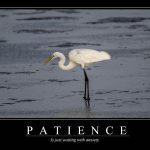
Wonderful! I’ve seen all but one of these species in the EC Choco region. Had no idea that the Happy Gringo guy was a birder. Hope to get back there again. Thanks for triggering some lovely memories!